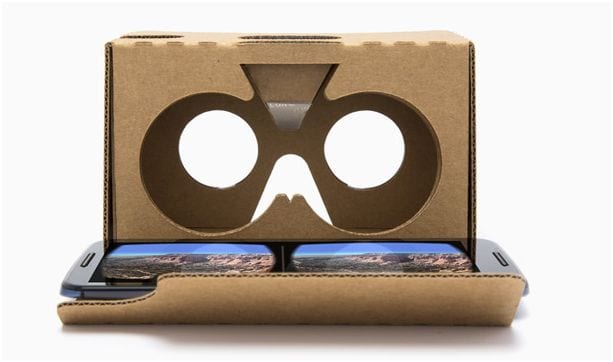Tech giant Alphabet Inc (NASDAQ:GOOG)’s Google is set to shake up the virtual reality (VR) with plans to release a new VR headset in the coming months and to focus its entire annual developer conference, Google IO, on VR applications.
2016 has already been a busy year for VR technology. Oculus Rift, a promising VR head-mounted display that Oculus VR have been working on for over 4 years will finally be released on March 28. A few weeks afterwards, a similar head-mounted display developed by HTC will be available for purchase and PlayStation announced they will release their plans for their headset, PlayStation VR next month. These three headsets are expected to finally offer a truly immersive VR experience and be powerful enough to allow users to access sophisticated games and apps.
Google are widely expected to launch their own VR devices this years although how they will look and perform or how expensive they will be is yet to be revealed. Google could either develop a new expensive, headset like the ones being launched by PlayStation and HTC or they could choose to focus on mobile technology, which is cheaper and easier to use but not as powerful.
Late last year, Google create an entire VR division within the company which is being led by Clay Bavor, whose title is VR of Virtual Reality. Engineers within that division are working on a number of VR applications and experiments the company are hoping will give them the edge on the newly emerging VR devices market.
So far the company’s efforts have been focused on mobile VR applications like Cardboard, a VR mobile platform which can be used with a simple fold-out cardboard head mount, or Jump, an open source VR camera rig design which creates a 360-degree video. These applications open up VR to uninitiated users who might not be willing to pay hundreds of dollars for a gaming head-mounted display. However, mobile VR applications have serious limitations.
They rely on the gyroscope and compass within mobile phones but these sensors are not very precise and cannot detect your head’s position in space.
Google might finally have the solution to problems that have plagued mobile VR applications in the form of their Project Tango. Tango allows mobile devices like smartphones and tablets to detect their position relative to objects around them without making use of any external signals like GPS or wireless mapping.
Although so far Google has been quite secretive about Tango’s capabilities, they have shown the technology’s ability to carry out indoor mapping of buildings and rooms. Tango makes use of additional new sensors so at the moment it can only run on a limited number of devices. However, Johnny Lee, one of the lead engineers working on the project said, in the same way that GPS capabilities were widely adopted, in a few years people will not even consider buying a phone that cannot run Tango.









